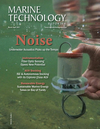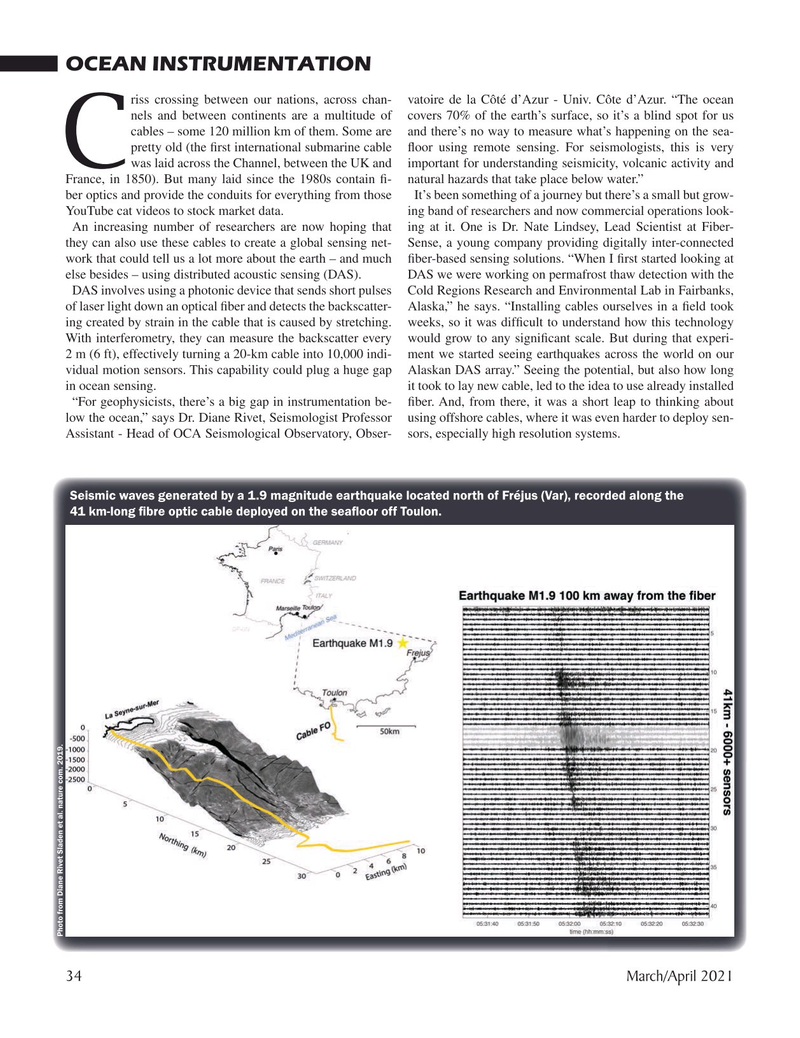
Page 34: of Marine Technology Magazine (March 2021)
Oceanographic Instrumentation & Sensors
Read this page in Pdf, Flash or Html5 edition of March 2021 Marine Technology Magazine
OCEAN INSTRUMENTATION riss crossing between our nations, across chan- vatoire de la Côté d’Azur - Univ. Côte d’Azur. “The ocean nels and between continents are a multitude of covers 70% of the earth’s surface, so it’s a blind spot for us cables – some 120 million km of them. Some are and there’s no way to measure what’s happening on the sea- pretty old (the ? rst international submarine cable ? oor using remote sensing. For seismologists, this is very
Cwas laid across the Channel, between the UK and important for understanding seismicity, volcanic activity and
France, in 1850). But many laid since the 1980s contain ? - natural hazards that take place below water.” ber optics and provide the conduits for everything from those It’s been something of a journey but there’s a small but grow-
YouTube cat videos to stock market data. ing band of researchers and now commercial operations look-
An increasing number of researchers are now hoping that ing at it. One is Dr. Nate Lindsey, Lead Scientist at Fiber- they can also use these cables to create a global sensing net- Sense, a young company providing digitally inter-connected work that could tell us a lot more about the earth – and much ? ber-based sensing solutions. “When I ? rst started looking at else besides – using distributed acoustic sensing (DAS). DAS we were working on permafrost thaw detection with the
DAS involves using a photonic device that sends short pulses Cold Regions Research and Environmental Lab in Fairbanks, of laser light down an optical ? ber and detects the backscatter- Alaska,” he says. “Installing cables ourselves in a ? eld took ing created by strain in the cable that is caused by stretching. weeks, so it was dif? cult to understand how this technology
With interferometry, they can measure the backscatter every would grow to any signi? cant scale. But during that experi- 2 m (6 ft), effectively turning a 20-km cable into 10,000 indi- ment we started seeing earthquakes across the world on our vidual motion sensors. This capability could plug a huge gap Alaskan DAS array.” Seeing the potential, but also how long in ocean sensing. it took to lay new cable, led to the idea to use already installed “For geophysicists, there’s a big gap in instrumentation be- ? ber. And, from there, it was a short leap to thinking about low the ocean,” says Dr. Diane Rivet, Seismologist Professor using offshore cables, where it was even harder to deploy sen-
Assistant - Head of OCA Seismological Observatory, Obser- sors, especially high resolution systems.
Seismic waves generated by a 1.9 magnitude earthquake located north of Fréjus (Var), recorded along the 41 km-long ? bre optic cable deployed on the sea? oor off Toulon.
Photo from Diane Rivet Sladen et al. nature com. 2019.
34 March/April 2021
MTR #3 (34-49).indd 34 3/22/2021 9:12:28 PM

 33
33

 35
35
